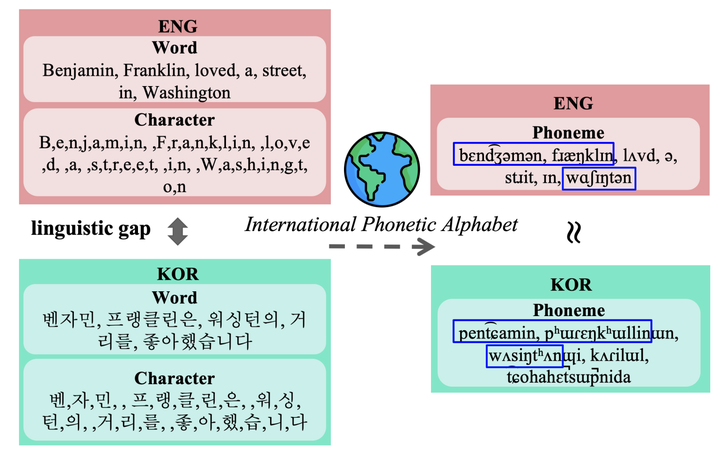Mitigating the Linguistic Gap with Phonemic Representations for Robust Multilingual Language Understanding

Abstract
Approaches to improving multilingual language understanding often struggle with significant performance gaps between high-resource and low-resource languages. While there are efforts to align the languages in a single latent space to mitigate such gaps, how different input-level representations influence such gaps has not been investigated, particularly with phonemic inputs. We hypothesize that the performance gaps are affected by representation discrepancies between those languages, and revisit the use of phonemic representations as a means to mitigate these discrepancies. To demonstrate the effectiveness of phonemic representations, we present experiments on three representative cross-lingual tasks on 12 languages in total. The results show that phonemic representations exhibit higher similarities between languages compared to orthographic representations, and it consistently outperforms grapheme-based baseline model on languages that are relatively low-resourced. We present quantitative evidence from three cross-lingual tasks that demonstrate the effectiveness of phonemic representations, and it is further justified by a theoretical analysis of the cross-lingual performance gap.